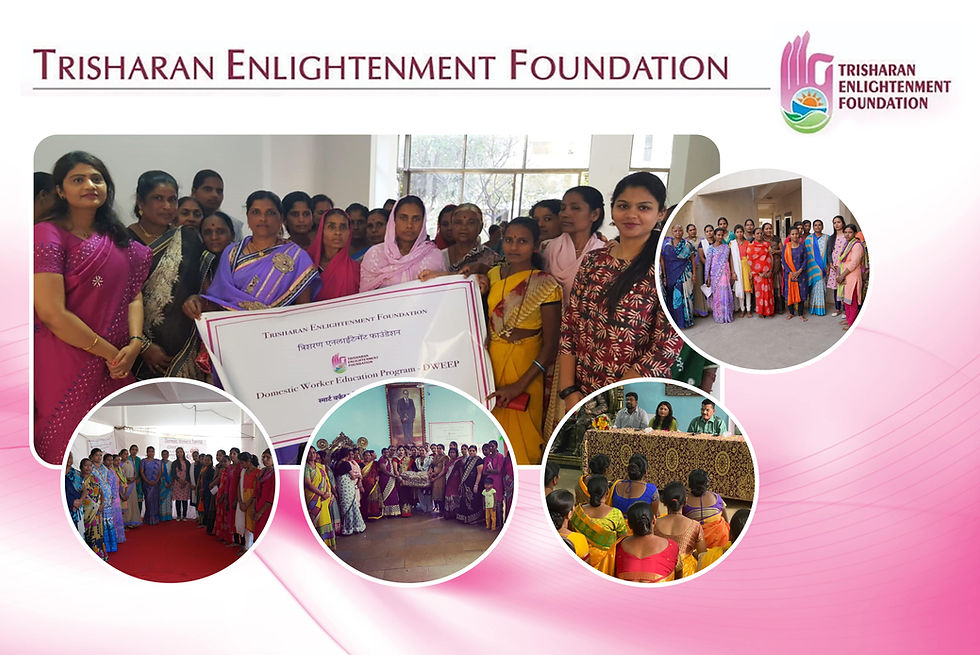Explore Empowering Community Development Projects
- Mahendra Nikam

- Sep 22
- 4 min read
Community development is a powerful tool that transforms lives and uplifts entire neighborhoods. By focusing on collective growth, these initiatives foster resilience, improve living standards, and create opportunities for all members. Empowering community projects are designed to harness local strengths and address specific challenges, making them vital for sustainable progress.
These projects often involve collaboration between residents, local organizations, and sometimes government bodies. The goal is to create environments where people feel valued, supported, and motivated to contribute. This article explores the essence of such projects, their benefits, and practical ways to get involved or start one.
Understanding Empowering Community Projects
Empowering community projects are initiatives that enable individuals and groups to take control of their development. They focus on building capacity, enhancing skills, and promoting participation. Unlike top-down approaches, these projects emphasize grassroots involvement, ensuring that solutions are relevant and culturally appropriate.
Examples of empowering projects include:
Skill development workshops that teach vocational skills to youth and adults.
Community gardens that provide fresh produce and promote environmental awareness.
Local health campaigns that educate residents about hygiene and disease prevention.
Microfinance programs that support small businesses and entrepreneurship.
These projects create a sense of ownership among participants, which is crucial for long-term success. They also encourage social cohesion by bringing diverse groups together to work towards common goals.

Key Elements of Successful Empowering Community Projects
To ensure effectiveness, empowering community projects should incorporate several key elements:
Community Participation
Active involvement of community members in planning and decision-making ensures that projects meet real needs. This participation builds trust and accountability.
Capacity Building
Providing training and resources helps individuals develop skills and confidence. This empowerment enables them to sustain the project independently.
Inclusivity
Projects must be accessible to all, regardless of age, gender, or background. Inclusivity strengthens social bonds and maximizes impact.
Sustainability
Long-term planning and resource management are essential. Projects should aim to create lasting benefits rather than temporary fixes.
Partnerships
Collaborating with NGOs, government agencies, and private sector partners can provide additional expertise and funding.
By focusing on these elements, communities can create projects that not only address immediate issues but also build a foundation for future growth.

What are the 7 stages of community development?
Community development typically follows a structured process to ensure systematic progress. The seven stages are:
Identifying Needs and Issues
Understanding the community’s challenges through surveys, interviews, and discussions.
Building Relationships and Trust
Establishing connections among stakeholders to foster collaboration.
Planning and Setting Goals
Defining clear objectives and strategies based on community input.
Resource Mobilization
Gathering financial, human, and material resources necessary for implementation.
Implementation
Executing the planned activities with active community involvement.
Monitoring and Evaluation
Tracking progress and assessing outcomes to make necessary adjustments.
Sustaining and Scaling Up
Ensuring the project’s longevity and exploring opportunities to expand its reach.
Each stage is critical and requires careful attention to detail. Skipping any step can compromise the project’s success.
Practical Steps to Start Your Own Empowering Community Project
Starting a community project may seem daunting, but breaking it down into manageable steps can simplify the process:
Conduct a Community Assessment
Gather data on local needs, resources, and potential partners.
Engage Stakeholders
Involve community leaders, residents, and organizations early on.
Define Clear Objectives
Set specific, measurable, achievable, relevant, and time-bound (SMART) goals.
Develop a Detailed Plan
Outline activities, timelines, responsibilities, and budgets.
Secure Funding and Resources
Explore grants, donations, and in-kind support.
Implement with Transparency
Keep the community informed and involved throughout.
Evaluate and Adapt
Use feedback to improve and sustain the project.
By following these steps, anyone can contribute to meaningful change in their community.

The Impact of Community Development Projects on Society
When well-executed, community development projects have far-reaching effects:
Economic Growth
Empowered individuals can start businesses, increasing local income and employment.
Improved Health and Well-being
Access to clean water, sanitation, and health education reduces disease.
Enhanced Education
Projects that support schools and literacy improve knowledge and skills.
Social Inclusion
Bringing diverse groups together fosters understanding and reduces conflict.
Environmental Sustainability
Initiatives like tree planting and waste management protect natural resources.
These benefits contribute to a cycle of positive change, where empowered communities continue to thrive and innovate.
For those interested in learning more or supporting such initiatives, exploring community development projects can provide valuable insights and opportunities.
Inspiring Stories of Empowerment from Around the World
Across the globe, countless communities have transformed their futures through empowering projects. For example:
In rural India, women’s self-help groups have created micro-enterprises that generate income and promote gender equality.
In urban Brazil, youth-led art programs have reduced crime rates and built pride in local culture.
In Kenya, water harvesting projects have improved access to clean water, reducing illness and boosting agriculture.
These stories highlight the power of collective action and the importance of tailored solutions.
Moving Forward: How You Can Make a Difference
Empowering community projects thrive on participation and support. Here are ways to get involved:
Volunteer your time and skills to local initiatives.
Donate resources or funds to trusted organizations.
Advocate for policies that support community development.
Share knowledge and raise awareness about successful projects.
Start small projects in your neighborhood to address specific needs.
Every effort counts and contributes to building stronger, more resilient communities.
Empowering community projects are more than just programs - they are catalysts for change. By understanding their principles and actively participating, anyone can help create a brighter future for their community and beyond.




Comments